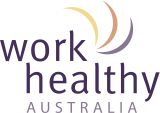
Employee health is no longer a “nice to have”—it is a critical business strategy that impacts productivity, retention, and financial performance.
Recent research conducted by the McKinsey Health Institute and the World Economic Forum revealed that, across different industries and countries, investing in workplace wellbeing can lead to higher profits, stronger employee engagement, and reduced turnover.
We digested the report into its key lessons, helping you make a case for investing in employee health at your organisation.
Only 49% of employees “fairing well”
In 2023, McKinsey Health Institute surveyed 30,000 employees in 30 countries and found that only 49% were “fairing well,” meaning they had positive holistic health scores and no burnout symptoms. The survey also highlighted that minority demographic groups (women, LGBTIQI+, lacking a high school diploma, neurodivergent, or low-income) are scoring worse on overall employee health.
Five industries showed higher rates of burnout and poor holistic health:
- Accounting
- Retail
- Agriculture, forestry, fishing, livestock
- Shipping, distribution
- Arts, media, entertainment, recreation
Conversely, the industries that demonstrated higher holistic health included human resources, construction, administrative and support services, education, and engineering/architecture.
It’s important to note that this was a worldwide survey, and the results might not reflect specific national results. However, they do offer unique references for further studies and comparisons.

What’s the ROI on employee health?
Workforce health services have significantly grown in recent years, driven by heightened awareness of employee wellbeing, regulatory changes regarding psychosocial risks, and increased health awareness. However, how do we measure the outcomes of investing in employee health? Many OHS and HR leaders we speak with find it challenging to persuade senior leadership about the importance of employee health and wellbeing, particularly in an environment of cost reductions.
Consulting giant McKinsey and Co has undertaken a worldwide study of employee wellbeing. Their findings? Companies that prioritise workforce health experience measurable benefits. In its global study, McKinsey measured the following positive impacts of investment in employee wellbeing:
- Increased productivity: happier employees are 13% more productive.
- Higher profitability: a 1-point increase in employee happiness is linked to $1.39 to $2.29 billion in annual profit gains.
- Lower turnover: organisations that foster a “culture of health” see 11% lower employee turnover.
- Reduced costs: addressing absenteeism and presenteeism could unlock up to $11.7 trillion in global economic value.
The positive influence of employee wellbeing on business success is indisputable. However, the McKinsey report warns employers not to focus solely on certain KPIs when measuring the impact of employee health investment. Every industry and organisation has its own unique characteristics, so metrics need to be tailored to your specific environment.
By making work a place that improves health, organisations can build a strong, productive, and engaged workforce and release greater individual and organisational potential.
McKinsey Health Institute

The hidden costs of poor workplace health
While many businesses focus on direct costs such as injury claims or absenteeism, the biggest financial losses often come from presenteeism. Presenteeism is when employees are physically present but not working at full capacity due to stress, fatigue, or health issues. This can significantly reduce productivity and should be a key consideration in any health strategy.
According to McKinsey’s Thriving Workplaces report, presenteeism accounts for up to 77% of lost productivity, far outweighing the impact of absenteeism or turnover.
Without proactive workplace health strategies, businesses are at risk of losing potential revenue and performance every day.
However, implementing these strategies may come with challenges, such as initial costs, resistance to change, and the need for ongoing evaluation. This is a concern that all business leaders and HR professionals should be aware of and take steps to address.
6 principles to address employee health
Investment in employee health must start with a strategic, data-driven approach, which is essential for maximising ROI. The McKinsey Health Institute report suggests the following six principles organisations can follow to create a successful healthlth and wellbeing investment:
- Understand your workforce health. Conduct surveys or assessments to gauge employees’ physical and mental wellbeing. Assess the baseline health status first to understand the potential value of improvement and the risks association with doing nothing.
- Develop sustainable and targeted health programs. Off-the shelf programs or one-off efforts will not build a healthy workforce. Address key risks in your workforce and identify priority areas to tackle. Understand that short-term benefits might arise, but sustainable results require a long-term strategy.
- Pilot interventions, test and learn. Set up pilot programs to get the ball rolling, and refine them along the way. Begin with small and manageable programs that address immediate priorities, rather than being stuck at the planning and strategy stage for too long. Some changes could be as simple as providing a kitchen or staff lunchroom. Consult with employees and empower them to participate in the strategy.
- Gain leadership support. Embedding health and wellbeing into workplace culture requires active leadership support. When leaders prioritise health initiatives and normalise seeking support, they set a powerful example for the rest of the organisation. A manager taking his lunch break outside the office or factory floor or a supervisor stretching before commencing duties sends a much more powerful message than health and wellbeing posters on the wall.
- Measure impact beyond sick leave. To measure success, track five to three metrics, starting with those already tracked or easy to implement. Survey employees, and don’t discard qualitative indicators. You can redirect, stop, or scale your strategy and adjust for results.
- Focus on systemic shift. Employee health must be embedded in daily practices, policies and values. McKinsey Health Institute calls it a “cultural shift” that demands a long-term vision, not just a focus on immediate results.
Case study: prioritising safety and health at a manufacturing business
A national manufacturing company partnered with Work Healthy Australia to reduce workplace injuries and improve employee wellbeing. The company faced increasing rates of musculoskeletal injuries and absenteeism, which were impacting productivity and staff morale.
Key interventions adopted:
- Implemented onsite early treatment, reducing wait times compared to external treatment.
- Provided manual handling training tailored to specific job roles.
- Introduced a workplace stretching and warm-up program to prevent injuries, bringing supervisors on board as role-models.
- Conducted early intervention screenings, allowing employees to address minor discomfort and pains before they escalated.
- Rolled out a health promotion calendar, engaging staff, their families and the local community to participate in key dates.
The results:
- 40% reduction in workplace injuries over 12 months.
- Decrease in absenteeism rates and faster return-to-work times.
- Increased employee engagement, with staff reporting improved wellbeing and job satisfaction.
- Cost savings through reduced compensation claims and improved workforce productivity.
This case study highlights how proactive health strategies can deliver tangible business benefits while improving employee quality of life.
A healthier workforce is a more resilient and adaptive workforce, better capable of navigating the uncertainties and challenges of a rapidly changing world.
McKinsey Health Institute
Next steps
The positive influence of employee well-being on business success is indisputable. Nowadays, preventing illness or injuries is not enough; organisations must foster an environment where employees flourish to remain competitive and not lag behind.
The McKinsey report provides valuable insights for HR and Safety Leaders and an opportunity to strengthen your case for investing in workplace health.
At Work Healthy Australia, we help businesses implement proactive strategies to keep employees healthy, productive, and engaged. Contact us today to learn more about how workplace health can benefit your organisation.
Sign up to our monthly enewsletter
"*" indicates required fields

